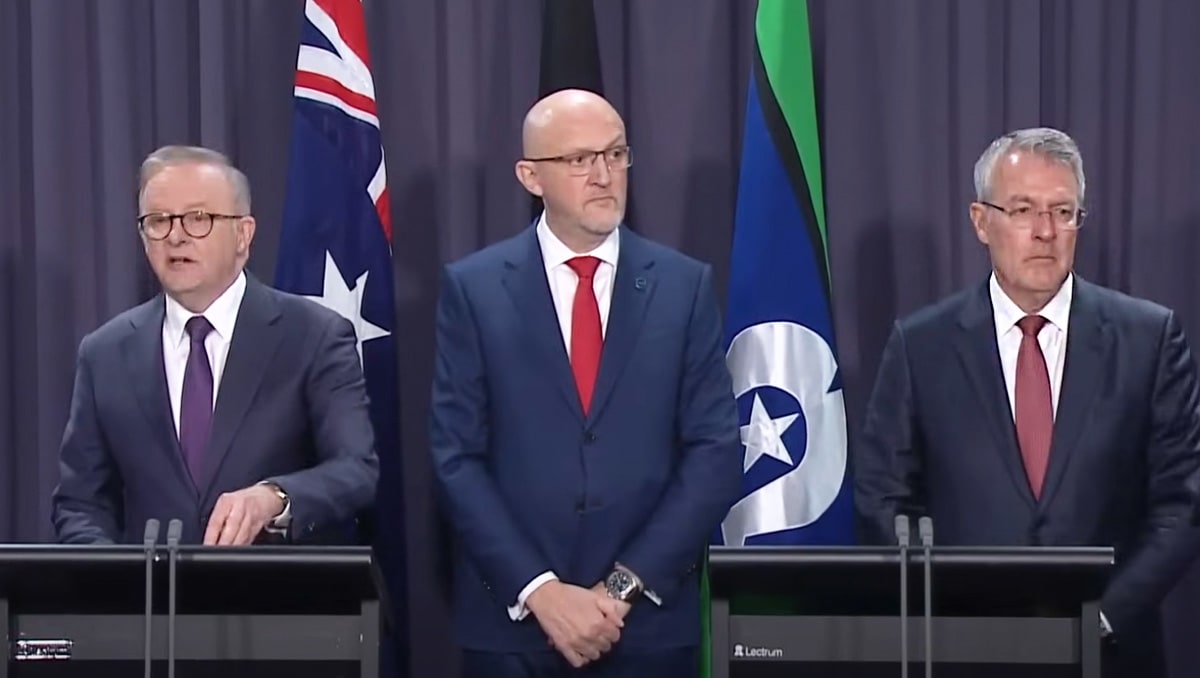Share this article on:
Powered by MOMENTUMMEDIA
Breaking news and updates daily.
ASIO has raised the terrorism threat level from possible to probable despite there being no “imminent threat or danger”.

Prime Minister Anthony Albanese announced today (5 August) in Canberra that the Australian Security Intelligence Organisation (ASIO) was raising the national terrorism threat level from possible to probable.
The Prime Minister said that while there was no singular threat on the horizon, a rise in “extreme ideologies” being adopted at home and around the world was the key driver.
“My government’s first priority is the safety and security of Australians, and this morning, I convened a National Security Committee meeting to hear from the Director-General and also then we have just completed a cabinet meeting,” Prime Minister Albanese told a press conference.
“I want to reassure Australians, ‘probable’ does not mean ‘inevitable’, and it does not mean there is intelligence about an imminent threat or danger.”
The threat level last changed in 2022, when the level dropped in the other direction, from probable to possible.
Prime Minister Albanese said that many things were driving “this global trend towards violence”, including online radicalisation.
“Governments around the world are concerned about youth radicalisation, online radicalisation and the rise of new mixed ideologies,” Albanese said.
“My government respects our intelligence agencies, we listen to their advice and we act on their advice – and that is what we are doing today.”
Mike Burgess, ASIO’s director-general of security, took to the lectern to go into more depth, explaining that the new threat level indicates “there is a greater than 50 per cent chance of an onshore attack or planning in the next twelve months”.
Burgess also explained the four characteristics of the current threat landscape based on eight terrorist “attacks or disruptions” observed over the last four months. The first characteristic was for terrorists to act alone, while the second was the speed with which individuals are becoming radicalised.
The third factor, however, exists online, where there has been “a resurgence in the number of minors embracing violent extremism”.
“In the recent cases, the oldest perpetrator was 21, and the youngest was 14,” Burgess said.
“Extremist ideologies, conspiracies, misinformation, are flourishing in the online ecosystem and young Australians are particularly vulnerable.”
The final factor is the sheer diversity of extremist ideologies being promoted online and elsewhere.
“Now, individuals are being motivated by a diversity of grievances and personal narratives. In some cases, I refer to the alleged perpetrators appear to be motivated by extreme religious beliefs, in others, nationalist and racist beliefs,” Burgess said.
“These factors make ASIO’s job more difficult.”
When later questioned about the young age of many perpetrators, Burgess said “parents should seek to be aware of what their children are consuming online”.
“Young adults, they’re adults, they’ve got to make their own decisions,” Burgess said. “But perhaps having a conversation about what they’re looking at online, but noting they’re adults, they’ll make their own decisions.”
Fielding another question, Burgess replied the online landscape has changed dramatically in the last 18 months.
“The environment is completely different from when we lowered it – technology, [the] online environment is a big part of the online radicalisation, online rhetoric,” Burgess said, before turning to the rise of artificial intelligence tools
“We’re only at the beginning of the AI journey. I don’t think it will be … As it generates benefits for society, it has the potential to generate unequal problems.”
Prime Minister Albanese also addressed the specific role that social media plays and the role of e-safety commissioner in addressing big tech.
“We’re very conscious about the role of social media here, and under the Online Safety Act, the e-safety commissioner has the powers to remove extremist and violent content now,” Prime Minister Albanese said.
“We are requiring platforms to employ measures that prevent the hosting of terrorist content. We brought forward the review of the Online Safety Act to ensure it is fit for purpose and that it is adequately addressing areas of hate speech. And we are embarking on an important national conversation about social media age limits through the trial that we are doing, our age assurance trial. That’s about making sure that any action can be done effectively.
“But we know that social media is playing a role in this. One of the things about social media is that the algorithms push people towards more extremes and they reinforce views so that some people think that if they’re logging on for a particular view, it will continue to put that forward as if that is the only view, and it will reinforce prejudices which are there.
“So, we are very conscious of that.”

David Hollingworth has been writing about technology for over 20 years, and has worked for a range of print and online titles in his career. He is enjoying getting to grips with cyber security, especially when it lets him talk about Lego.
Be the first to hear the latest developments in the cyber industry.